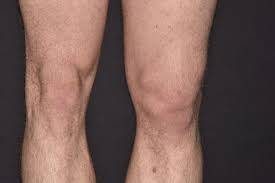Dislocated Kneecap: Causes, Symptoms, Treatment, and Recovery
A dislocated kneecap, also known as patellar dislocation, is a condition where the kneecap (patella) shifts out of its normal position within the groove at the end of the thigh bone (femur). This displacement can cause immense pain, hinder mobility, and impact daily activities. Prompt medical attention is essential to address this condition effectively.

Understanding the Anatomy of the Kneecap
The kneecap, or patella, is a small, flat, triangular bone located in front of the knee joint. Its primary role is to protect the knee joint and provide leverage for the thigh muscles to straighten the leg. A healthy kneecap moves within a groove at the end of the femur, allowing for smooth and painless joint movement.
Common Causes of Dislocated Kneecap
Dislocated kneecaps often occur due to a combination of factors, ranging from trauma to anatomical predispositions. The main causes include:
Trauma and Injury:
Sudden blows or falls can forcefully push the kneecap out of its groove, causing dislocation.
Structural Factors:
Anatomical variations, such as shallow grooves or a high-riding patella, can increase the risk of dislocation.
Muscle Imbalances:
Weakness or imbalances in the thigh muscles can lead to instability in the kneecap’s movement, increasing the chance of dislocation.
Symptoms, Diagnosis, and Medical Evaluation
Recognizing Dislocated Kneecap Symptoms
Recognizing the symptoms of a dislocated kneecap is crucial for timely intervention. Common symptoms include:
Severe Pain:
Intense pain, especially when trying to move the leg or put weight on the affected knee.
Swelling:
Swelling around the knee joint due to inflammation.
Visible Displacement:
The kneecap may visibly shift to the side of the knee, often creating an abnormal appearance.
Difficulty Moving:
Difficulty in bending or straightening the knee due to pain and instability.
These symptoms can vary in intensity, but they should never be ignored.
When to Seek Medical Attention
If you experience the symptoms mentioned above, it’s imperative to seek immediate medical attention. Delay in treatment can lead to complications, including further damage to the knee joint and ligaments. A healthcare provider or orthopedic specialist can provide a proper diagnosis and recommend the appropriate treatment plan.
Diagnosis and Evaluation
A healthcare provider will conduct a thorough physical examination to assess the condition of the knee. This may involve observing the position of the kneecap, checking for swelling, and evaluating range of motion. X-rays or imaging tests might be ordered to confirm the dislocation and check for associated injuries. Accurate diagnosis ensures that the right treatment approach is chosen.
Treatment Options and Recovery
Emergency Care and Relocation
When a dislocated kneecap occurs, immediate medical attention is required to safely relocate the kneecap to its proper position. A trained medical professional will perform this procedure, ensuring minimal pain and preventing further damage.
Immobilization and Support
After the kneecap is relocated, immobilization is often necessary for a period to allow healing. This may involve:
Bracing or Splinting:
A brace or splint is used to keep the knee stable and prevent inadvertent movements.
Use of Crutches:
Crutches may be recommended to avoid putting weight on the affected leg and aid in mobility.
Physical Therapy and Rehabilitation
Physical therapy plays a pivotal role in the recovery process. A tailored exercise program is designed to strengthen the muscles around the knee, improve flexibility, and restore normal joint function. Physical therapists guide patients through exercises that gradually increase in intensity as the knee heals.
Preventing Recurrence and Long-Term Outlook
Preventive Measures
To reduce the risk of future dislocations, consider the following preventive measures:
Muscle Strengthening:
Focus on strengthening the quadriceps and hamstrings to improve knee stability.
Balanced Exercises:
Incorporate exercises that promote overall muscle balance around the knee joint.
Warm-Up and Conditioning:
Prior to physical activities, ensure proper warm-up and stretching to prepare the muscles and joints.
Long-Term Outlook
With appropriate treatment and diligent rehabilitation, individuals can expect a positive outcome. Many people regain full function and mobility of the knee. Following medical advice, attending physical therapy sessions, and practicing preventive measures are crucial for a successful recovery and reducing the likelihood of recurrence.
Frequently Asked Questions (FAQs) about Dislocated Kneecap
Q: What is a dislocated kneecap?
A: A dislocated kneecap, also known as patellar dislocation, occurs when the kneecap is forced out of its normal position within the knee joint.
Q: What causes a dislocated kneecap?
A: Trauma, falls, structural factors (shallow groove), and muscle imbalances can contribute to a dislocated kneecap.
Q: What are the symptoms of a dislocated kneecap?
A: Symptoms include severe pain, swelling, visible displacement of the kneecap, and difficulty moving the knee.
Q: How is a dislocated kneecap diagnosed?
A: Diagnosis involves a physical exam, imaging tests (X-rays), and evaluating the position of the kneecap.
Q: What should I do if my kneecap is dislocated?
A: Seek immediate medical attention. Do not try to relocate the kneecap yourself.
Q: Can a dislocated kneecap heal on its own?
A: No, a dislocated kneecap requires professional medical care to ensure proper realignment and healing.
Q: What is the treatment for a dislocated kneecap?
A: Treatment includes relocating the kneecap, immobilization with braces or splints, physical therapy, and exercises to strengthen surrounding muscles.
Q: Can a dislocated kneecap recur?
A: Yes, without preventive measures, the risk of recurrence is higher. Strengthening exercises and muscle balance help prevent recurrence.
Q: How long does recovery take after a dislocated kneecap?
A: Recovery duration varies, but it often involves several weeks of immobilization followed by physical therapy. Full recovery may take a few months.
Q: Is surgery necessary for a dislocated kneecap?
A: Surgery is considered if there are associated injuries or if recurrent dislocations occur despite conservative treatment.
Conclusion
A dislocated kneecap is a challenging condition that requires timely intervention, proper treatment, and commitment to rehabilitation. By understanding its causes, recognizing symptoms, seeking medical attention, and following a comprehensive recovery plan, individuals can regain mobility and lead a healthy life.




